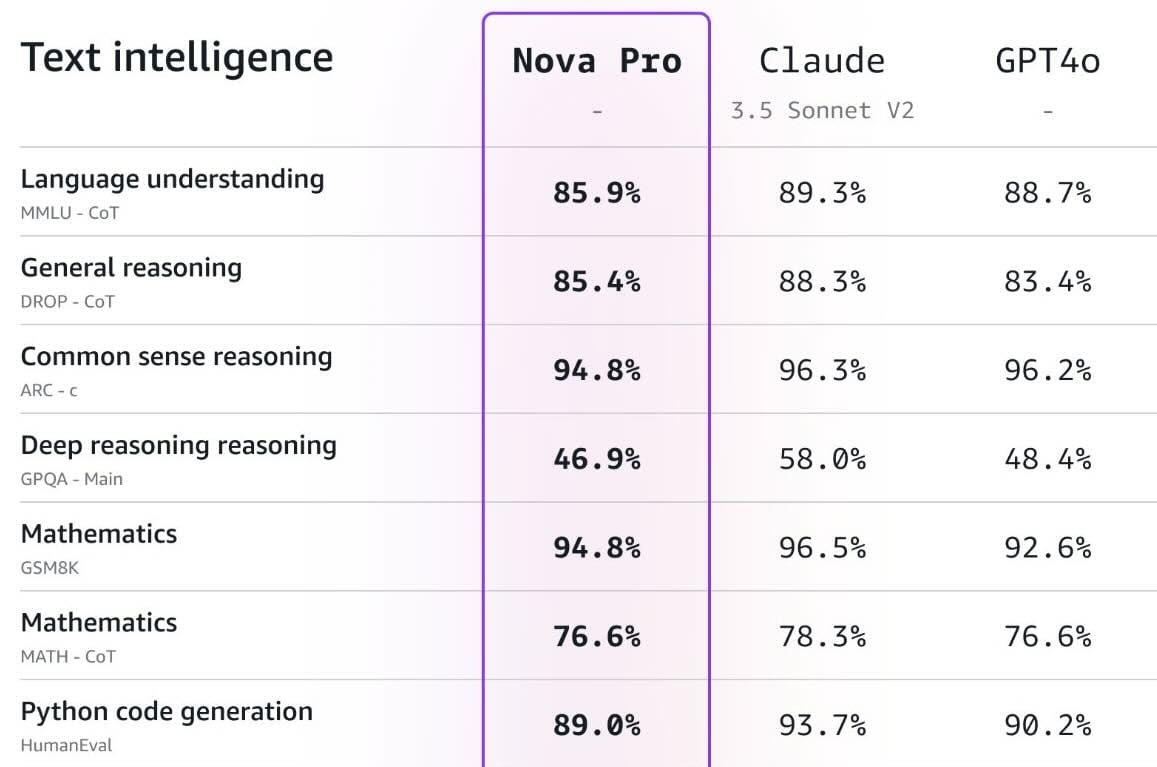Musk Declares War ⚡ AI Shops For You 🛒 Amazon takes on GPT-4 🤖
PLUS: Android phones map the ionosphere, Fei-Fei Li’s interactive 3D worlds, and CBA transforms banking with AI.
👋 Welcome to this week in AI
🎵 Don’t feel like reading? Listen to two synthetic podcast hosts talk about it instead.
📰 Latest news
Elon Musk’s Latest Move Against OpenAI: Ethics, Rivalry, and Big Stakes
Elon Musk has filed a legal motion to block OpenAI from transitioning to a for-profit business model, citing ethical concerns and antitrust violations.
Musk accuses OpenAI and Microsoft of discouraging competition and sharing sensitive business information.
He also alleges self-dealing by CEO Sam Altman, highlighting questionable practices like favouring Stripe as a payment processor.
The lawsuit is the latest in a series of disputes between Musk and Altman, whose relationship has deteriorated since Musk’s departure from OpenAI in 2018.
Why It Matters
OpenAI’s shift from a non-profit to a capped for-profit model raises questions about transparency and governance.
Musk’s growing political influence adds another dimension, potentially shaping regulatory outcomes.
As AI becomes more central to global innovation, this saga exemplifies the stakes involved in controlling its development and deployment.
Scaling Generative AI: Overcoming Barriers to Unlock Economic Impact
Generative AI adoption is growing, with 65% of businesses integrating it into at least one function.
Yet, only 5% have scaled projects to production due to barriers like AI output quality (72%), integration complexity (62%), and high training and inference costs (58%). Latency challenges affect 56% of companies.
To overcome these hurdles, organisations are adopting compound AI systems and tools like retrieval-augmented generation (RAG), semantic caching, and vector databases.
Open-source models are also gaining traction, used by 42% of businesses to reduce costs and enhance flexibility.
Generative AI is projected to contribute $1–$4.4 trillion annually to global GDP, underscoring its transformative potential.
Why It Matters
Generative AI offers substantial economic and operational benefits, but deployment challenges slow progress.
Solutions like compound AI systems and efficiency tools enable cost-effective scaling, positioning businesses to unlock AI’s full potential.
As adoption increases, generative AI will drive productivity gains and significant economic impact.
AI Shopping Agents: The Future of Effortless E-Commerce
AI shopping agents are emerging as a new frontier in online retail, with companies like Perplexity, Google, and OpenAI developing systems to simplify the shopping process.
Perplexity’s agent, for example, can navigate websites, find products, and complete purchases using tools like Stripe’s single-use debit cards to mitigate financial risks.
While promising, these agents currently face challenges such as transaction delays, stock mismatches, and reliance on human oversight.
As these tools evolve, they have the potential to disrupt traditional online shopping by bypassing retailer websites, reducing opportunities for upselling, and limiting advertisers’ ability to target customers.
By leveraging techniques like CAPTCHA-solving and direct user interface navigation, AI developers aim to sidestep restrictions from retailers, paving the way for broader adoption.
Why It Matters
AI shopping agents represent a shift in how consumers engage with online retail, offering the promise of efficiency and cost savings.
By automating tasks like searching for deals or booking flights, these agents could save users significant time and effort.
However, they also pose a challenge to the existing retail ecosystem, potentially reducing website traffic and altering revenue streams from ads and promotions.
As major players like Google and OpenAI join the race, the next generation of AI agents could transform e-commerce, making shopping faster, smarter, and more personalised.
Smart Banking: How CBA Uses AI to Enhance Security and Service
The Commonwealth Bank of Australia (CBA) is using AI to enhance banking for over 10 million customers.
Fraud Prevention: AI tools like NameCheck and generative AI alerts have reduced scam losses by 50% and customer-reported fraud by 30%.
Improved Service: AI-powered messaging has cut call centre wait times by 40%, with 50,000 customer queries handled daily.
Operational Efficiency: AI has reduced business credit reviews from 14 hours to 2 and enables loan pre-approvals in under 10 minutes.
Proactive Alerts: CBA sends 20,000 fraud alerts daily, scaling to 35,000 soon.
Sustainability: Operations are powered by 100% renewable electricity, with a strong AI governance framework.
Why It Matters
CBA demonstrates how AI can enhance security, boost efficiency, and improve customer service in banking. Tangible outcomes like significant fraud reductions and faster loan processing illustrate AI’s ability to streamline operations and build trust.
As a leader in AI maturity and governance, CBA sets a benchmark for the industry, balancing technological advancements with sustainability and customer-centric innovation.
Transforming Images into Worlds: Fei-Fei Li’s World Labs Unveils Interactive 3D AI
Fei-Fei Li’s startup, World Labs, has unveiled an innovative AI system that transforms images into interactive, navigable 3D environments.
Users can explore these environments in real time via web browsers, using keyboard and mouse controls. Key features include:
3D Generation From Image: The system extrapolates beyond the original image to create consistent, fully interactive spaces.
Advanced Interaction: Real-time camera effects (e.g., depth-of-field, dolly zoom), interactive lighting, and animation controls allow for enhanced scene manipulation.
Why It Matters
This technology democratises 3D content creation by making it as straightforward as generating images.
It has significant implications for industries such as gaming, filmmaking, and virtual experiences.
By bridging static imagery with immersive environments, World Labs could redefine creative workflows and unlock new opportunities for accessible, interactive world-building.
📁 Check out the interactive worlds
Mapping the Ionosphere with Android Phones: Advancing GPS Accuracy and Space Weather Insights

A new study from Google Research reveals how data from millions of Android phones is being used to map the ionosphere with unprecedented detail.
By aggregating signals from GPS receivers on these devices, researchers achieved mapping accuracy comparable to — and in some cases surpassing — conventional monitoring stations.
Leveraging up to 2 million phones per hour, totalling 40 million measurements daily, the study significantly enhanced ionosphere coverage, particularly in under-monitored regions like South Asia and Africa.
The maps feature 70 km spatial resolution with 10-minute intervals, improving GPS accuracy for Android users and enabling the identification of previously unseen ionospheric phenomena, including plasma bubbles and solar storm activity.
Why It Matters
This breakthrough highlights the potential of smartphones as powerful scientific tools.
Enhanced GPS accuracy can improve navigation and emergency response, while detailed ionosphere mapping helps mitigate risks from solar storms that threaten infrastructure like power grids and communication systems.
By doubling global ionosphere coverage and offering new scientific insights, this research sets a precedent for using mobile technology to address complex natural phenomena and societal challenges.
OpenAI Considers Ads to Offset Costs, Despite Altman's Reservations
OpenAI is exploring advertising as a potential revenue stream to manage the high costs of developing and maintaining its generative AI models.
While CFO Sarah Friar emphasised there are “no active plans” for ads, the company recently hired Shivakumar Venkataraman, a former Google advertising executive.
This aligns with Financial Times reporting that OpenAI is preparing for this possibility. Founder Sam Altman remains wary, stating ads would be a "last resort" and expressing discomfort with the idea of combining AI and advertising.
Why It Matters
OpenAI’s move reflects the tension between the financial sustainability of cutting-edge AI and maintaining ethical principles.
Ads could provide an additional revenue stream but risk eroding user trust in the transparency of AI outputs.
The development mirrors broader challenges in the tech industry, as companies struggle to balance innovation costs with user-centric approaches.
The Rise of Open-Source Reasoning Models: Alibaba’s QwQ-32B-Preview
Alibaba’s QwQ-32B-Preview is the latest entrant in a wave of reasoning-focused AI models, joining the ranks of OpenAI’s o1 series.
Designed for complex problem-solving in mathematics and programming, QwQ-32B-Preview features a 32K context window and excels on benchmarks such as MATH-500 (90.6%), AIME (50%), and LiveCodeBench (50%).
Its unique introspective reasoning process enables iterative refinement of answers for enhanced performance.
Open-source and available on Hugging Face under an Apache-2.0 licence, QwQ-32B-Preview adds to the growing landscape of accessible reasoning models for researchers and developers.
Why It Matters
The surge in reasoning-focused AI models signals a shift toward capabilities requiring deep analytical thinking and technical problem-solving.
QwQ-32B-Preview’s performance demonstrates how open-source contributions can rival proprietary models like OpenAI’s o1 series, fostering greater innovation and accessibility.
While challenges like recursion and language mixing remain, its introspective approach sets a foundation for future advancements, positioning reasoning models as key tools in solving real-world technical challenges.
📁 Try the model on Hugging Face
Amazon Nova: AWS Enters the Frontier AI Race with Cutting-Edge Models
Amazon has entered the frontier AI race with Nova, a family of multimodal foundation models directly competing with GPT-4, Claude, and Llama.
Integrated with AWS through Bedrock, Nova offers cutting-edge capabilities for text, image, and video tasks at unmatched price-performance ratios.
Key models like Nova Pro deliver advanced reasoning and multimodal processing for a third of GPT-4’s cost, while lighter models focus on speed and efficiency, catering to diverse enterprise needs.
Why It Matters
Amazon’s Nova leverages AWS’s scale to challenge established players with aggressive pricing and top-tier performance benchmarks.
By offering a complete, affordable AI stack, Amazon is reshaping the frontier model landscape, signalling a shift where cloud providers become dominant players in generative AI.











